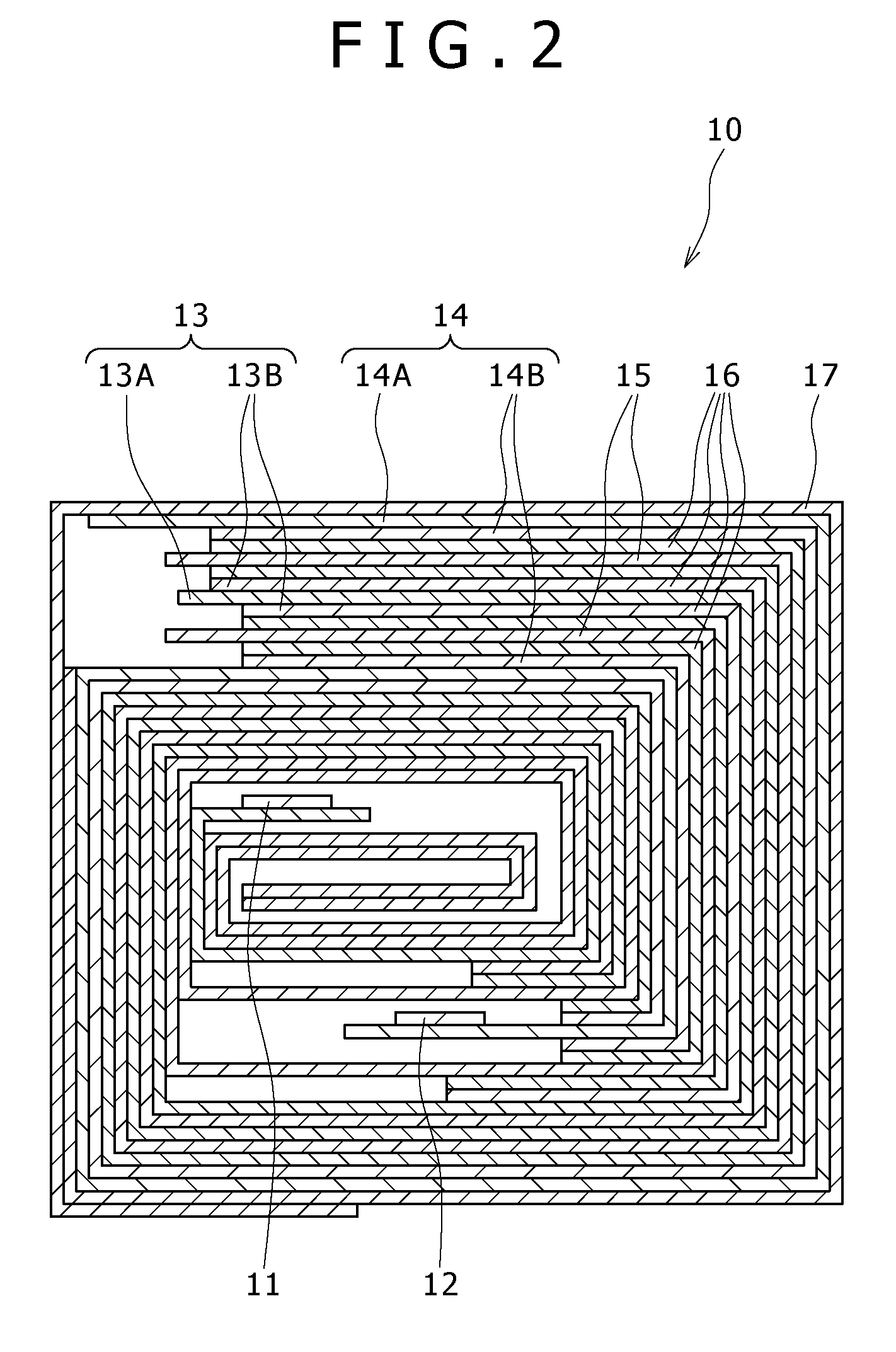Positive electrode active material, positive electrode, nonaqueous electrolyte cell, and method of preparing positive electrode active material
a technology of active materials and positive electrodes, which is applied in the direction of cobalt compounds, chemistry apparatus and processes, cell components, etc., can solve the problems of increasing resistance of electrodes, lowering capacity due to coating, and difficult to obtain sufficient capacity, so as to achieve sufficient capacity, reduce the effect of capacity and increase the resistance of electrodes
- Summary
- Abstract
- Description
- Claims
- Application Information
AI Technical Summary
Benefits of technology
Problems solved by technology
Method used
Image
Examples
first embodiment
1. First Embodiment
First Example of Nonaqueous Electrolyte Cell
[0063]FIG. 1 is a perspective view showing a configuration example of a nonaqueous electrolyte cell according to a first embodiment. The nonaqueous electrolyte cell is, for example, a nonaqueous electrolyte secondary cell. The nonaqueous electrolyte cell, flat in overall shape, has a configuration in which a wound electrode body 10 fitted with a positive electrode lead 11 and a negative electrode lead 12 is accommodated in the inside of film formed casing members 1.
[0064]The positive lead 11 and the negative lead 12 are each, for example, rectangular plate-like in shape, and they are lead out from the inside toward the outside of the casing members 1 in the same direction, for example. The positive electrode lead 11 is made of a metallic material such as aluminum (Al), for example, and the negative electrode lead 12 is made of a metallic material such as nickel (Ni), for example.
[0065]The casing members 1 are each compos...
second embodiment
2. Second Embodiment
Second Example of Nonaqueous Electrolyte Cell
[0126]A second embodiment will be described. A nonaqueous electrolyte cell according to the second embodiment uses positive active material with more uniformly coating.
[0127]Since other materials and configurations are the same as in the first embodiment, the explanations about these are omitted.
[0128]Positive Electrode Active Material
[0129]The positive electrode active material is, for example, composite oxide particles which contain therein a metallic element M2 different from a principal transition metal M1 and which have a concentration gradient of the metallic element M2 from the center toward the surface of each particle. The concentration gradient is such that the concentration of the metallic element M2 increases as the particle surface is approached. The composite oxide particles are particles of a lithium-containing transition metal composite oxide wherein at least one element X selected from among sulfur (S)...
third embodiment
3. Third Embodiment
Third Example of Nonaqueous Electrolyte Cell
[0146]A second embodiment will be described. A nonaqueous electrolyte cell according to the second embodiment uses an electrolytic solution in place of the gelled electrolyte 16 in the nonaqueous electrolyte cell according to the first embodiment. In this case, the electrolytic solution is used by impregnating the separator 15 therewith. As the electrolytic solution, the same electrolytic solutions as those in the first embodiment above can be used.
[0147]The nonaqueous electrolyte cell thus configured can be manufactured, for example, in the following manner. First, the positive electrode 13 and the negative electrode 14 are produced. The positive electrode 13 and the negative electrode 14 can be produced in the same manner as in the above-described first embodiment, and, therefore, detailed description of the production is omitted here.
[0148]Next, after the positive electrode lead 11 and the negative electrode lead 12 a...
PUM
| Property | Measurement | Unit |
|---|---|---|
| melting point | aaaaa | aaaaa |
| melting point | aaaaa | aaaaa |
| diameter | aaaaa | aaaaa |
Abstract
Description
Claims
Application Information
 Login to View More
Login to View More - R&D
- Intellectual Property
- Life Sciences
- Materials
- Tech Scout
- Unparalleled Data Quality
- Higher Quality Content
- 60% Fewer Hallucinations
Browse by: Latest US Patents, China's latest patents, Technical Efficacy Thesaurus, Application Domain, Technology Topic, Popular Technical Reports.
© 2025 PatSnap. All rights reserved.Legal|Privacy policy|Modern Slavery Act Transparency Statement|Sitemap|About US| Contact US: help@patsnap.com



